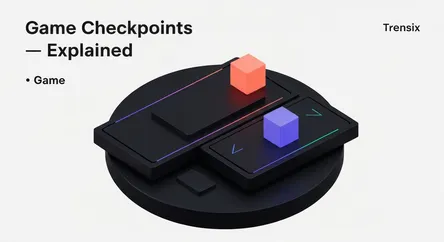Game
Game Checkpoints Explained

Discover game checkpoints, the crucial gameplay mechanic that saves your progress, reduces frustration, and shapes the player experience in video games.
What is it?
A checkpoint is a specific location within a video game level where a player's progress is automatically saved. If the player's character perishes, they will restart, or "respawn," from the last checkpoint they passed, rather than from the beginning of the level or a manual save file. This system is a fundamental element of game design, particularly in linear, level-based games like platformers, action-adventures, and shooters. It allows developers to create long, challenging sequences without forcing players to replay large sections repeatedly, thus maintaining the flow and momentum of the gameplay experience.
Why is it trending?
While not a new concept, the implementation and philosophy behind checkpoints are constantly evolving. They are a key topic in discussions about game difficulty and accessibility. Difficult genres like "Soulslikes" (e.g., Elden Ring) use strategic checkpoint placement to create tension and reward mastery. Conversely, many modern games use frequent checkpoints to make the experience more forgiving and accessible to a broader audience. The trend is toward more thoughtful checkpoint systems that respect the player's time while still serving the game's intended challenge, keeping this core mechanic highly relevant in design conversations.
How does it affect people?
Checkpoints profoundly influence a player's emotional state and overall enjoyment. Well-placed checkpoints reduce frustration, making difficult challenges feel fair and surmountable. They create a satisfying loop of tension and relief, encouraging players to persevere through tough sections. Reaching a new checkpoint after a difficult fight provides a powerful sense of accomplishment. Poorly designed checkpoint systems, however, can be a major source of frustration, leading players to feel their time is being wasted. Ultimately, they are a critical tool for pacing, difficulty management, and player retention.